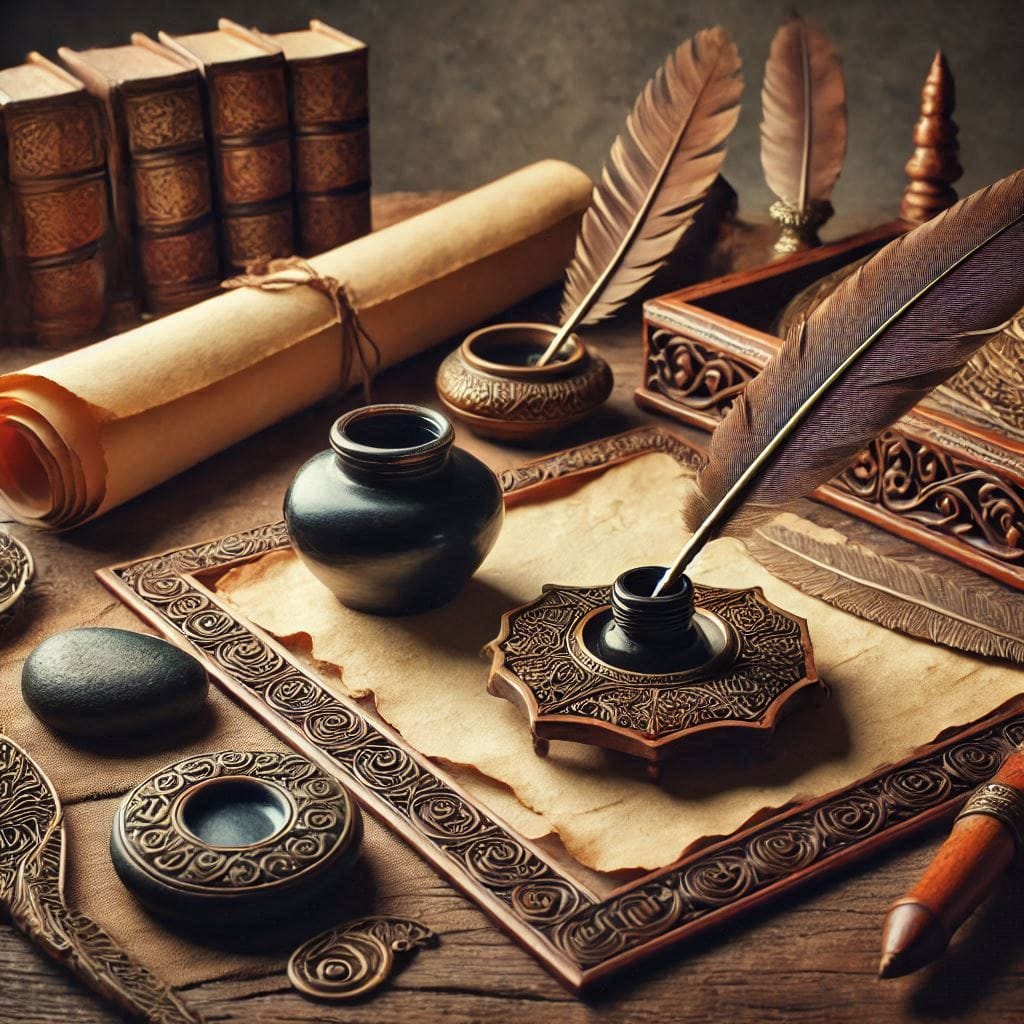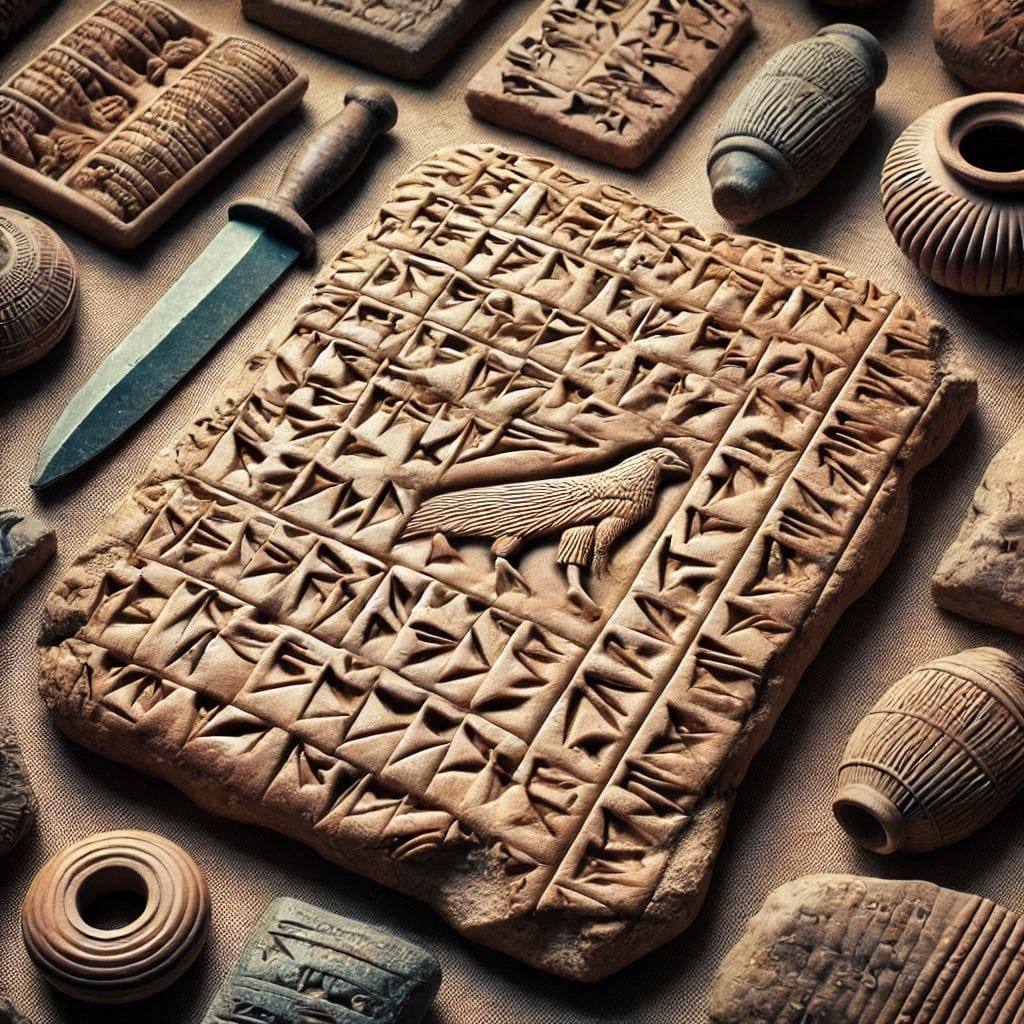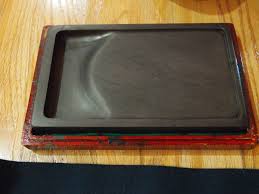Introduction: Writing Tools as the Backbone of Civilization
From the first symbols etched into stone to the fluid artistry of calligraphy brushes, ancient writing tools have profoundly shaped human history. These implements were not just tools but transformative innovations that laid the groundwork for civilization’s growth. By enabling the recording of trade, governance, and cultural narratives, they turned fleeting ideas into enduring legacies.
The evolution of writing implement history mirrors the progression of early societies, from crude carvings on stone tablets to refined methods of expression. These tools supported the development of early writing systems, bridging gaps between generations and facilitating the spread of knowledge. Each advancement, from the sharp styluses of Mesopotamia to the elegant brushes of ancient China, reflects humanity’s innate drive to document, communicate, and connect.

In essence, tools for writing were not just instruments—they were the bedrock of civilization, preserving knowledge and fostering the cultural and intellectual growth that defines us today.
Early Beginnings – The Dawn of Writing Implements
The origins of writing instruments history can be traced back to the earliest forms of human communication, when symbols and markings evolved into structured systems of writing. Around 3100 BCE, in the fertile lands of Mesopotamia, the first known early writing systems emerged to meet the administrative needs of growing civilizations. Here, the invention of clay tablets and the reed stylus marked a revolutionary step in human history.
The clay tablets were made from soft, wet clay that hardened after inscriptions were made. The tool of choice, the reed stylus, was crafted from a sharpened reed, allowing scribes to press wedge-shaped symbols into the clay to create cuneiform writing. This combination of materials and tools laid the groundwork for organized record-keeping, transforming trade, governance, and communication.

In ancient Egypt, advancements in ancient writing tools paralleled Mesopotamian innovations. Egyptians created papyrus, an early form of paper made from the pith of the papyrus plant. Scribes used brushes and reed pens to inscribe hieroglyphics onto papyrus scrolls. These tools were essential for documenting religious texts, administrative records, and cultural stories, showcasing a profound understanding of material properties and writing efficiency.
Fresh Insights into Prehistoric and Lesser-Known Tools
Before these systems, prehistoric humans relied on crude tools such as sharp stones and pigments like ochre to carve symbols into rocks. These early implements, while primitive, represent the first attempts at long-term communication.
- Recent archaeological discoveries have uncovered diverse materials, such as wooden styluses and bone tools, which were used for inscriptions. These findings expand our understanding of the ingenuity behind early writing systems and demonstrate the adaptability of ancient societies.
By enabling people to document ideas, transactions, and events, these ancient writing tools became the cornerstone of early civilizations, fostering cultural and intellectual growth.
The Role of Writing Implements in Advancing Civilizations
As societies became more complex, the development of tools for writing played a pivotal role in advancing civilizations. Writing tools not only facilitated communication but also allowed the preservation of knowledge that shaped economies, religions, and governance structures.
In ancient Greece and Rome, writing implement history saw significant innovations. Wax tablets were introduced as reusable surfaces for writing, paired with metal styluses to inscribe messages. The tablets, made from wooden frames filled with wax, were portable, durable, and erasable, making them ideal for administrative tasks and education. These tools enabled early forms of correspondence and played a crucial role in the Roman Empire’s expansive bureaucracy.
During the medieval period in Europe, the transition to parchment and vellum as writing surfaces gave rise to the iconic quill pens. These pens were crafted from the feathers of large birds, such as geese or swans, and their flexible tips allowed for fine, precise strokes. Alongside these tools, inks derived from natural substances like iron gall, soot, and plant extracts highlighted the resourcefulness of early societies in perfecting ink origins for various surfaces.

How Writing Tools Influenced Civilizations
- The adoption of tools for writing such as quills and ink enabled the transcription of religious texts, legal documents, and scientific discoveries, creating a foundation for cultural and intellectual expansion.
- The accessibility of materials like parchment allowed for the spread of literacy, especially in monastic communities, which played a key role in preserving knowledge during the Dark Ages.
- Writing tools also fostered the growth of early economies by streamlining record-keeping for trade and taxation.
Fresh Insights into Rare and Overlooked Tools
- Mayan Glyph Tools: The Mayans developed sophisticated ancient scripts using bone styluses to inscribe intricate glyphs on stone and other materials. These tools reflect their advanced understanding of both language and craftsmanship.
- Siberian Tribes: Indigenous Siberian tribes utilized unique carving tools for inscribing symbols on wood and stone, shedding light on lesser-known writing practices outside the dominant historical narratives.
By adapting tools for writing to their specific needs, ancient civilizations not only recorded their histories but also enabled the dissemination of ideas that influenced future generations.
Innovations Across Continents – The Eastern Perspective
The evolution of writing instruments history in Eastern civilizations showcases unparalleled creativity and precision, reflecting the cultural priorities of the region. From the delicate artistry of brush pens in China to the enduring legacy of palm leaf manuscripts in India, these tools not only facilitated communication but also became symbols of cultural refinement.
China: The Mastery of Brush Pens and Inkstones
China’s contributions to what is a writing implement are profound and enduring. By the 5th century BCE, the Chinese had perfected brush pens, which were crafted from bamboo shafts and animal hair. These pens, combined with the invention of inkstones and solid ink sticks, revolutionized writing practices.
- Brush Pens: Ideal for writing on silk and bamboo strips, these tools allowed for expressive strokes, making them essential for both practical documentation and the art of calligraphy.
- Inkstones and Solid Ink: The development of inkstones—flat, smooth surfaces for grinding solid ink with water—enabled writers to control ink consistency, fostering precision and elegance.

This synergy between tools and materials contributed to the preservation of historical records, literary works, and philosophical treatises, many of which remain influential today.
India: Styluses and Palm Leaf Manuscripts
In ancient India, the creation and dissemination of palm leaf manuscripts exemplify the ingenuity of writing instruments history in the subcontinent. Styluses made from iron or bronze were used to etch text onto dried and treated palm leaves.
- These manuscripts were instrumental in preserving sacred texts, such as the Vedas, and disseminating knowledge in fields like astronomy, mathematics, and medicine.
- Fresh Insight: Recent findings indicate that styluses were often adorned with intricate carvings, reflecting the sacred nature of the texts they created.

The Indian tradition of bamboo writing—etching characters on bamboo strips with sharp tools—also highlights the resourcefulness of early societies in utilizing locally available materials.
Japan: The Art of Sumi-e Brushes
In Japan, brush pens evolved into sumi-e brushes, integral to both formal writing and the art of ink wash painting. These tools, made from bamboo handles and animal hair, were prized for their ability to produce fine lines and bold strokes.
- The practice of using sumi-e brushes for calligraphy embodied not just communication but also a spiritual discipline, emphasizing mindfulness and balance.
- Fresh Insight: Japanese scholars often created hybrid brushes, incorporating techniques from Chinese and Korean traditions to enhance versatility.
Comparative Analysis: East vs. West
While Eastern civilizations focused on tools that emphasized artistry and fluidity, Western tools often prioritized durability and precision. For instance:
- Chinese brush pens excelled in creating elegant scripts on delicate surfaces like silk, while Roman wax tablets were designed for practicality and reusability.
- Indian styluses for palm leaf manuscripts addressed the challenges of tropical climates, unlike European quills that required sturdier surfaces like parchment.
The innovations of the East enriched writing instruments history, showcasing the region’s emphasis on aesthetics, functionality, and cultural expression. These tools not only advanced communication but also laid the foundation for enduring artistic and literary traditions.
What Is a Writing Implement? An In-Depth Exploration
A writing implement is more than just a tool—it is a window into the history of human civilization, reflecting how societies communicated, recorded events, and expressed creativity. This section delves into what is a writing implement, its evolution, and its significance throughout history. From stone chisels to quill pens and beyond, the tools used to inscribe ideas have evolved alongside humanity, adapting to cultural, technological, and material advances.
Defining Writing Implements: What They Are and Their Purpose
At its simplest, a writing implement is any object designed to leave a mark on a surface, whether by carving, engraving, or applying ink or pigment. These tools served a dual purpose in ancient societies: they were functional objects for recording information and symbolic artifacts representing education, governance, and art.
Early definitions of writing tools were tied to the methods they supported. For example:
- Stone Chisels: Used for carving images or symbols into rock, primarily for ceremonial or communicative purposes.
- Reed Styluses: Thin, pointed tools made of plant material, which enabled ancient scripts like cuneiform to flourish.
Today, the writing tools definition encompasses everything from pencils and pens to digital styluses, showing an ongoing evolution influenced by societal needs and technological progress.
Tracing the Evolution of Writing Implements
The history of writing implements spans thousands of years and multiple civilizations. Each stage in this history represents a step forward in how humans recorded knowledge and communicated complex ideas.
- Prehistoric Origins:
Early humans used natural materials like sharp stones and ochre to create markings on cave walls. These markings were the precursors to written language, capturing stories, rituals, and knowledge. - The Mesopotamian Reed Stylus (~3100 BCE):
The Mesopotamians developed reed styluses, which they used to inscribe cuneiform symbols on clay tablets. These implements were efficient, inexpensive, and perfectly suited to their medium. - Egyptian Brushes and Reed Pens:
Ancient Egyptians innovated with brushes and reed pens, allowing them to write hieroglyphics on papyrus. This transition marked a significant advancement in writing mobility and flexibility. - Metal Styluses for Wax Tablets:
Greeks and Romans popularized the use of metal styluses on wax tablets. These implements were durable and reusable, making them ideal for record-keeping and education. - Feathers as Quills in Medieval Europe:
The quill pen, made from bird feathers, became the dominant writing tool in medieval Europe. Its flexibility, precision, and ability to hold ink made it indispensable for scribes and scholars.
Each advancement in writing evolution was driven by practical needs, resource availability, and cultural innovation, underscoring the ingenuity of ancient societies.
The Science Behind Ancient Writing Tools
The materials used in writing implements were carefully chosen for their physical properties and adaptability. Here’s why certain materials dominated the history of writing implements:
- Stone and Metal:
Chisels and styluses made from stone or metal were ideal for engraving durable records on rock or wax. Their hardness ensured precision and longevity. - Reeds and Bamboo:
These organic materials were lightweight, easy to shape, and porous enough to hold ink, making them perfect for early scripts. - Quills:
Bird feathers, particularly those of geese or swans, were hollow and naturally suited to channel ink, enabling smoother writing on parchment or vellum.
This careful selection of materials reflects a scientific understanding of their properties, even in ancient times, and highlights the ingenuity behind the tools’ design.
Lesser-Known Ancient Writing Implements
While tools like quills and reed styluses are well-documented, many civilizations used unique implements that remain underexplored:
- Inuit Engraving Tools:
The Inuit people used bone, ivory, and other available materials to carve symbols and stories. These tools reveal the adaptability of Arctic cultures in preserving their heritage. - Viking Rune-Carving Implements:
Vikings used iron tools to inscribe runes on stone and wood. These implements were essential for creating long-lasting records in harsh Northern climates. - Mesoamerican Glyph Tools:
The Mayans used pointed sticks and bone tools to inscribe intricate glyphs on stone and bark paper, contributing to one of the world’s most complex writing systems.
These tools highlight the diversity and creativity of writing methods across different cultures and environments.
How Ancient Implements Inspire Modern Writing Tools
Modern writing tools have roots in ancient practices, blending traditional designs with modern materials. Examples include:
- Fountain Pens:
Inspired by quills, these pens feature reservoirs to hold ink and are prized for their elegance and functionality. - Styluses for Digital Screens:
Just as ancient styluses etched into wax, modern styluses enable precision and control, this time on digital devices.
The essence of what is a writing implement has remained consistent: to bridge thought and expression in the most effective way possible.
Fresh Insights into Writing Implements
Advances in archaeology and experimental research continue to shed light on ancient writing tools:
- Ink Residue Analysis: Techniques for analyzing residues on ancient pens and brushes reveal the chemical compositions of early inks, providing clues about trade and technology.
- Reconstruction of Tools: Experimental archaeologists recreate ancient implements to test their efficiency, offering insights into their practicality and craftsmanship.
These findings not only enhance our understanding of writing implement history but also fill gaps in knowledge about lesser-documented civilizations.
Writing Tools as Cultural Symbols
Writing tools have transcended their utilitarian purpose, becoming profound symbols of cultural identity, status, and intellectual achievement throughout history. From the revered tools of scribes in ancient civilizations to the democratization of knowledge through mass production, these ancient writing tools have left an indelible mark on human heritage.
Egyptian Scribes: Tools of Reverence and Authority
In ancient Egypt, scribes held a prestigious role as the keepers of knowledge. Their tools were not merely instruments but symbols of their elevated status:
- Reed Pens and Papyrus:
The reed pen, dipped in ink, was the primary tool for writing on papyrus scrolls. These scrolls recorded everything from religious texts to governmental decrees. - Depiction in Art and Culture:
Egyptian art frequently featured scribes with their tools, emphasizing their importance in society. Statues and tomb carvings often showed scribes holding a writing palette and reed pen, symbolizing wisdom and connection to the divine.
Quills in Medieval Europe: A Scholar’s Emblem
During medieval Europe, the quill pen emerged as a symbol of intellect and scholarship:
- Association with Scholars and Clerics:
Quills, typically made from goose or swan feathers, were used to write on parchment and vellum. They became closely associated with monks and scholars who meticulously transcribed texts in monasteries. - Status Symbol:
Possession of a finely crafted quill and ink set indicated literacy and education, often limited to the clergy and elite classes.
The Role of Writing Tools in the Democratization of Knowledge
As civilizations evolved, writing tools played a significant role in making knowledge more accessible:
- The Printing Revolution:
The invention of the movable type printing press in the 15th century drastically reduced the cost of producing books. Tools like quills and wooden typesets enabled mass production, democratizing literacy and education. - Impact on Cultural Literacy:
Affordable books and pamphlets allowed ideas to spread rapidly, fueling movements like the Renaissance and the Enlightenment.
Indigenous Cultures: Writing Tools as Storytellers
In many indigenous cultures, writing tools served not only for recording but also for preserving oral traditions and cultural heritage:
- Rare Tools and Techniques:
- Mesoamerican Civilizations: The Mayans used carved bone or wooden tools to inscribe hieroglyphs on stone and codices.
- Native American Cultures: Tools like quills and natural pigments were used for recording tribal histories on animal hides or birch bark.
- Inuit Engraving Implements: Carved ivory or bone tools were employed to inscribe intricate patterns on driftwood or walrus tusks, preserving stories and legends.
Writing Tools as Artistic and Cultural Artifacts
Writing tools often transcended their functional roles, becoming cultural artifacts and symbols of identity:
- Calligraphy Brushes in East Asia:
In China and Japan, brushes were both writing tools and artistic instruments, revered for their role in calligraphy, an esteemed cultural practice. These tools became symbols of elegance and artistic discipline. - Stylized Writing Implements:
Ornately decorated inkwells, pen holders, and writing desks from Europe’s Victorian era are prime examples of how writing tools became luxury items and cultural statements.
Writing Tools in Literacy History
The evolution of ancient writing tools directly influenced the trajectory of literacy:
- Tools and Literacy Rates:
Societies with simpler and more accessible writing tools, like clay tablets or wax boards, often saw higher levels of basic literacy among their populations. - Mass Production’s Role:
With the advent of efficient tools and processes, like the printing press, knowledge reached the broader public, reshaping societies and empowering the middle class.
Fresh Insights: Indigenous and Undervalued Traditions
Modern research has uncovered overlooked cultural artifacts related to writing:
- Pacific Islanders: Symbols carved into wood using sharp shells served as mnemonic devices for storytelling.
- African Cultures: Tools made from natural materials like wood and fibers were used to inscribe patterns on ceremonial artifacts, blending art and record-keeping.
- Polynesian Tattoos: Tattooing tools also acted as permanent “writing” tools, encoding genealogies and cultural narratives directly onto the skin.
The history of writing instruments is intertwined with humanity’s cultural and intellectual evolution. From the reed pens of Egyptian scribes to the quills of medieval scholars, these tools have been more than mere objects—they are enduring symbols of knowledge, art, and societal advancement. Exploring these historical writing symbols reminds us of the transformative power of writing tools and their timeless cultural significance.
Challenges and Mysteries in Studying Writing Implements
The study of writing instruments history and ancient writing tools reveals not only the ingenuity of early civilizations but also the complexities of preserving and interpreting these artifacts. Researchers face numerous challenges while exploring the remnants of tools that once transformed human communication, often relying on technological advancements to fill in historical gaps.
Challenges in Preserving Organic Writing Materials
Preserving organic materials like reed pens, wooden styluses, and parchment presents one of the greatest obstacles in studying ancient writing tools:
- Natural Decay:
Organic components decompose rapidly unless preserved in unique conditions such as dry deserts, frozen tundra, or oxygen-free environments. This limits the availability of complete specimens for study. - Environmental Stressors:
Humidity, acidity, and temperature fluctuations in excavation sites can further degrade fragile writing materials, making them unrecognizable. - Fragmentary Evidence:
Often, researchers find only fragments of writing tools, such as broken styluses or ink residue, making it difficult to reconstruct their full design and usage.
Advances in Technology Aiding Research
Despite these challenges, modern technology is revolutionizing the analysis of archaeological tools and ancient writing tools, enabling researchers to uncover previously hidden details:
Ink Residue Analysis:
-
- Advanced tools like mass spectrometry and high-performance liquid chromatography are used to identify the composition of ancient inks.
- These methods help trace the sources of raw materials such as charcoal, plant resins, and metallic oxides, offering insights into trade networks and resource management.
- For example, studies of Roman inkpots have revealed surprising variations in ink recipes across different regions of the empire.
Experimental Archaeology:
-
- By recreating tools using historical methods, researchers simulate ancient writing practices.
- Experimenting with reed pens, clay tablets, and wax styluses provides a hands-on understanding of how these tools were manufactured and utilized.
- This approach has clarified questions about the ergonomics of quills and the durability of inks under varying environmental conditions.
- Case Studies: Recent Discoveries of Ancient Writing Tools
Recent excavations have unveiled fascinating examples of ancient writing tools, each contributing unique insights into their use and significance:
Egyptian Reed Pens:
-
- Archaeologists discovered reed pens in tombs, often alongside palettes and inkpots, underscoring their importance in religious and administrative contexts.
- Analysis of associated artifacts revealed that these pens were crafted from local Nile reeds, combining practicality with regional resources.
Roman Wax Tablets:
-
- At Vindolanda in Britain, researchers unearthed wooden wax tablets with preserved inscriptions. These tablets shed light on the administrative practices of the Roman frontier.
Cuneiform Writing in Mesopotamia:
-
- Clay styluses used for cuneiform writing were found at ancient administrative centers. Their varying designs suggest specialization for different types of records, from trade receipts to legal documents.
Reconstruction of Writing Tools Through Experimental Archaeology
Reconstructing ancient writing tools is critical for understanding their functionality and cultural significance:
Crafting Techniques:
-
- Modern artisans attempt to replicate tools such as quills and inkstones using traditional methods. This process uncovers details about the craftsmanship and technological skills of ancient societies.
Performance Testing:
-
- Testing reconstructed tools on surfaces like papyrus, parchment, and clay tablets provides insight into their strengths and limitations.
- For instance, experiments with reed pens have demonstrated their durability, but also highlighted the frequent sharpening required for effective writing.
Validation of Hypotheses:
-
- By comparing experimental results with historical accounts, researchers validate theories about the design and efficiency of ancient writing implements.
Mysteries Still Surrounding Ancient Writing Implements
The study of writing instruments history continues to encounter enduring mysteries:
Undeciphered Uses:
-
- Some artifacts believed to be archaeological tools for writing lack definitive evidence of their function, leaving room for speculation.
Lost Inscriptions:
-
- Many writings on ephemeral materials like bark or palm leaves have vanished, taking with them crucial insights into ancient cultures.
Cultural Variations:
-
- Variations in tool design across regions suggest localized innovations, but the lack of comprehensive data limits understanding of these developments.
Legacy and Modern Influence of Ancient Writing Implements
The writing implement history demonstrates an enduring legacy that continues to shape the way we write today. Many modern innovations draw direct inspiration from ancient writing tools, reflecting both the ingenuity of early civilizations and their adaptability to contemporary needs.
One prominent example is the fountain pen, which mimics the functionality and design of the medieval quill. Similarly, the revival of modern calligraphy has sparked renewed interest in traditional tools such as brushes and dip pens, blending ancient techniques with modern artistry. This cultural resurgence underscores the timeless elegance of traditional writing practices.
Additionally, the push for sustainable writing tools echoes ancient practices of utilizing biodegradable materials. For example, modern eco-friendly brushes and bamboo pens align with the resourceful methods of early scribes, who crafted implements from natural, readily available materials.
Fresh Insights:
Exciting developments include upcoming museum exhibitions and research projects dedicated to recreating ancient writing implements, offering a hands-on experience of historical writing techniques. These initiatives not only preserve history but also inspire innovation in the realm of tools for writing.
Conclusion: Writing Implements as Timeless Treasures
The journey of ancient writing tools encapsulates humanity’s quest for expression, knowledge preservation, and cultural growth. From stone carvings and reed styluses to quills and modern pens, the writing implement history showcases a seamless evolution that mirrors societal advancements.
Preserving this legacy remains crucial, as these tools are not just remnants of the past but foundational elements of our modern writing technologies. Their story offers invaluable lessons in creativity, sustainability, and innovation.
As we celebrate the artistry of tools for writing, we are reminded of their profound impact on civilization. By honoring these treasures, we ensure that their influence continues to inspire future generations.
Related Articles
- The Invention of Paper
Explore how paper revolutionized communication and laid the foundation for modern documentation. - Printing Press
Discover how this groundbreaking invention transformed knowledge dissemination and sparked cultural revolutions. - The Fascinating Invention of Telegraph
Learn about the telegraph’s impact on global communication and its role in modern technology evolution. - Understanding Carbonless Copy Paper: Uses and Benefits
Dive into the innovations behind carbonless copy paper and its applications in business and record-keeping.






